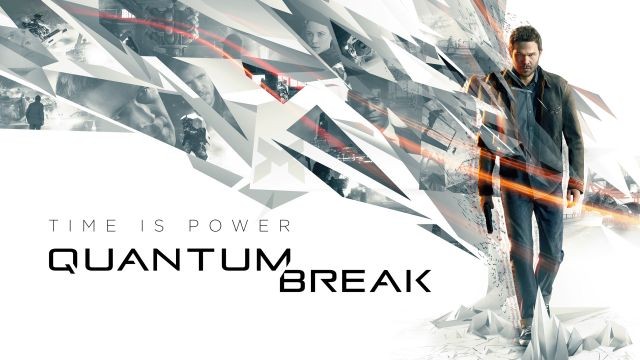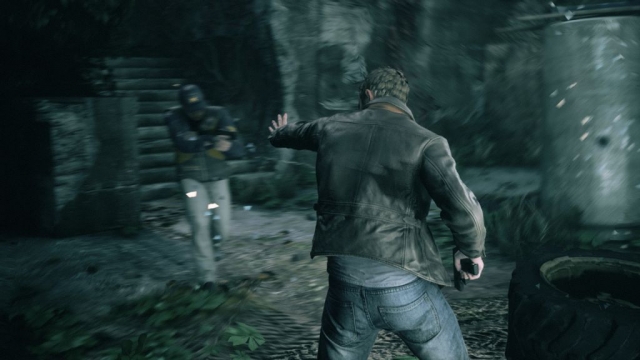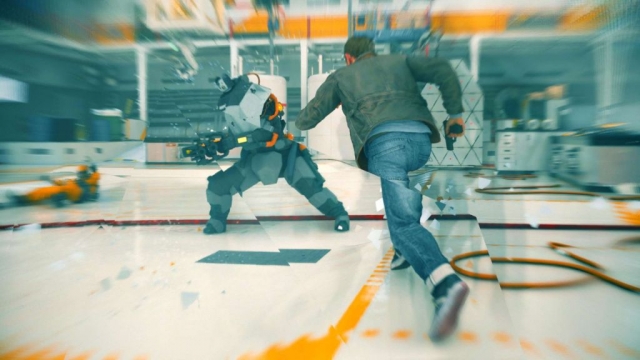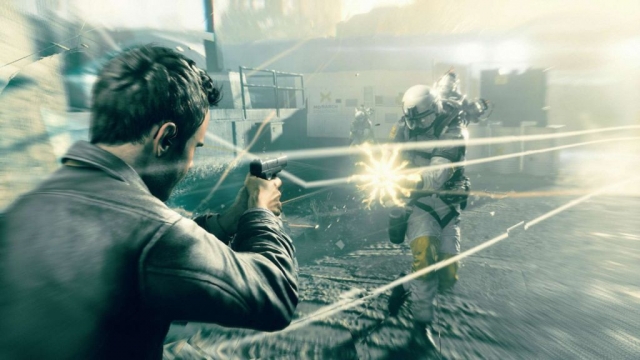Quantum Break

Quantum Break has dazzled gamers since the moment it was first shown off in 2013. The initial trailer didn’t reveal much in the way of gameplay or story, but did make players wonder. The footage of a woman screaming amid flames frozen in time while people ran into the area and rummaged through the frozen-in-space debris showed off something completely different. These acted as the puzzle pieces of a compelling narrative, and the game’s release allows the puzzle pieces to take shape and take you on a journey at the same time.
Remedy is known for mixing action in with psychological horror – and not the jump scare kind, but the kind that makes you fear what’s around every corner. Alan Wake nailed the latter, but faltered a bit when it came to the action. Quantum Break doesn’t suffer from that issue and delivers fairly satisfying gunplay with a touch of stealth thrown in.
The core of Quantum Break is its story, and its multi-faceted nature. Jack Joyce is our main protagonist and his journey begins when he goes to a university at the request of an old friend. Paul Serene tells him he has something to show him and blows his mind with what is effectively a time machine. He states that it gives him the ability to go back in time and all he needs to do is complete a lap in the lab’s track. However, Jack gets a brief glimpse at a second version of Paul from five minutes before and is freaked out. Now, this thing that he saw all the potential in the world in suddenly became a way to play God to him.
Jack’s older brother William intervenes and tells him that Paul is just in this for personal gain, and we get our first taste of conflict due to the moral argument vs. what could be done with this technology. Personal choice plays a large part in Quantum Break – both from an in-game character perspective, and as a player. While you’re in the university, you can meet a protester and chat with her a bit. She’ll tell you about Monarch being this big evil corporation, but has plenty of facts to back it up and this leads into something big from both a character and player perspective. As a player, meeting her is optional – you can just go to the lab and skip all of this stuff.
However, in taking that extra few minutes to explore, you can find new items throughout the world that build on the narrative of the game. Calling such things narrative items in-game may seem a bit pretentious, but it’s true here. Everything you find and every person you encounter builds on the world and allows you to see them more as real people being affected by the game’s events.
The game’s unique formatting plays into this as well, as certain events will seamlessly blend into the Quantum Break show. The in-game models are fortunately very well-done and you can tell that a lot of work went into making them look good so you could take them seriously – even if there was no live-action part to it. There isn’t much of an uncanny valley to be had here, and the acting is fantastic. There aren’t any melodramatic moments like in Heavy Rain or Beyond: Two Souls, which tried to meld cinematic gaming with more movie-style storytelling to mixed results.
Here, the game’s structure encourages you to get sucked into the world. Doing so makes the live-action portions more impactful, since you’ll see the characters’ lives in more detail – things that wouldn’t really translate as well to a game. Little things in life are shown off too – like a visit with a pregnant wife being concerned that her husband is spending too much time “at work” and not enough time with her, and avoiding his responsibilities. You realize that every character here is either in the dark to some degree or forced to live a double-life and gives some real depth to them.
The television-style presentation doesn’t just extend to the game – but to resuming it. You’ll pick up where you left off in the game and get a “previously on Quantum Break” recap of key events – so if you haven’t been able to play the game in a while, you’ll get a rundown that keeps the most important parts of the narrative in your head at all times. The city of Riverport feels alive, and things like establishing shots of buildings help add to the immersion of the experience. Establishing shots are something you take for granted in TV shows and movies – but we don’t see them often in gaming, so they stand out here, and are used perfectly.
Quantum Break’s use of a TV-style presentation alongside a stellar cast winds up creating a wholly unique gaming experience. The heavy emphasis on time manipulation may seem odd for a game plot, but as a longtime Futurama fan, I felt right at home with it. It’s clear that a lot of time was taken to craft a compelling story, and having branching paths throughout it encourages multiple playthroughs. You’ll see things from multiple perspectives, and even though some outcomes remain the same, the journey taken to them is different and compelling in its own right since it allows you to interpret the story and the characters in your own way and gives you more control over things to some degree.
Quantum Break’s mix of storytelling, gunplay, puzzle-solving, and action work very well together. While Alan Wake tried to mix in something similar, it didn’t do things nearly as well as it does here. Everything has a level of polish and fine-tuning to it and allows this game to live up to its potential, while Alan Wake never quite did even though it also had a top-notch concept. Being able to use a slew of powers to either stop time for an enemy, charge it up to do some damage, spot the next area you need to get to, or create a bullet shield around you gives you a lot of variety in the usual cover-based third-person shooting action.
Visually, Quantum Break is usually a feast for the eyes. The lighting effects are top-notch, as are most aspects of the character models. The clothing is one of the best in gaming, but long female hair still looks a bit odd. Since the game uses motion capture, the animation is smooth and there aren’t many instances of animation being wonky – although occasionally you’ll be taken out of things due to trying to jump on something only to find that it’s got an invisible wall in front of it.
There are also some instances of texture pop-in, and they can also briefly take you out of the experience. You’ll go to a new area and wait for all the textures to load, while the placeholder textures look rough and clearly don’t evoke the total vision of what Remedy had in mind. Luckily, the textures come in clearly a second later and usually impress – although some things like soda machines have low-resolution art that has fully loaded, but just doesn’t look good to the eye.
The sound design of Quantum Break is extraordinary, and one of the few games I would recommend only listening to with some high quality headphones to really immerse yourself in it. While playing through it with some Status HD Twos, I was amazed at just how much better the combat was because you could get a better idea of where your enemies were. Sure, you can use your powers to reveal enemy locations – but sometimes you don’t have access to, and you need to make use of other non-game tools to succeed.
Quantum Break is Remedy’s best game to date. It is their most-polished game so far and accomplishes every goal it sets out to from a narrative perspective. The integration of gaming and live-action is incredible, although internet buffering can hurt the presentation a bit. Downloading it resolves this problem – so be sure to keep some extra space free for that if you so desire. Aside from a couple of visual quirks, it looks outstanding and it controls like a dream too. The sound design is exceptional as well, and benefits quite a bit from a high-quality audio setup either on your TV or with some great headphones.
Reviewed By: Jeremy Peeples
Publisher: Microsoft Studios
Rating: 95%
——————————————————————————–
This review is based on a digital copy of Quantum Break for the Xbox One provided by Microsoft Studios.
 Game Over Online
Game Over Online




















